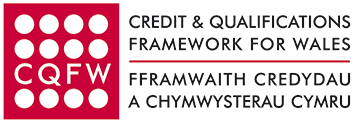Support Children and Young People's Health and Safety
- Unit ID:
- CCY365
- Unit Code:
- PT23CY131
- Level:
- Three
- Credit Value:
- 2
- Sector:
- 1.3
- LDCS:
- PT21
- GLH:
- 15
- Last registration date:
- 31/08/2019
- Lower age restriction:
- 16

Purpose and Aim
This unit provides the knowledge, understanding and skills required to support children and young people’s health and safety. It requires a demonstration of competence in recognising hazards and undertaking risk assessments in the work setting
Learning OutcomesThe learner will
|
Assessment CriteriaThe learner can
|
||||||||||
|---|---|---|---|---|---|---|---|---|---|---|---|
|
|
||||||||||
|
|
||||||||||
|
|
||||||||||
|
|
Assessment Methods:
Assessment Information:
There is no specific assessment information to be used with this unit.
If not specifically stated in the assessment information, a plural statement in any assessment criterion means a minimum of two.
Other Mappings:
NOS ref: CCLD NOS Unit 302 Develop and maintain a healthy, safe and secure environment for children,
HSC NOS Unit 32:?Promote, monitor and maintain health, safety and security in the working environment,
LDSS Unit 2: Ensure your own actions reduce risk to health and safety &
CWDC Training, support and development standards for Foster care Standard 3: Understand health and safety, and healthy care UK Codes of Practice for Social Care Workers
Assessor Requirements:
Units need to be assessed in line with the Skills for Care and Development QCF Assessment Principles.
Assessment of Learning Outcome 2 must take place in a real work environment.
Additional information:
1.1. Factors e.g.
• The individual needs, age and abilities of the children and young people
• Specific risks to individuals such as pregnancy, sensory impairments
• The needs of carers where relevant
• The function and purpose of environments and services offered
• The duty of care
• Desired outcomes for the children and young people
• Lines of responsibility and accountability
2.1 Potential hazards: e.g.
• Physical
• Security
• Fire
• Food safety
• Personal safety
2.5. Other people including:
• Colleagues
• Visitors
• Families and carers
3.1. Balanced approach to risk management
• Taking into account child or young person’s age, needs and abilities
• Avoiding excessive risk taking
• Not being excessively risk averse
• Recognising the importance of risk and challenge to a child or young persons
development
4.1 Accidents, incidents, emergencies and illness e.g.
Accidents involving children, young people or adults
• Incidents –all types
• Emergencies such as fire, missing children or young people, evacuation.
• Recognising signs of illness such as fever, rashes or unconsciousness and
taking appropriate action